
5 things to know about Winnipeg’s big sewage problem
115 billion litres, 70 years to fix, $5.5 billion in lawsuits
Many old farm fields in southern Ontario look a lot like this one, which last November was a vast expanse of waist-high grasses the colour of washed-out gold, rippling in the breeze.
On a sunny, mild late fall day, a few green leaves persisted close to the not-yet frozen ground. Dried-out stems crunched underfoot. Birds called out from the trees surrounding the field while grazing horses looked on from the property next door. Over the fence and down the road were more fields, rolling on and on in the distance. But something made this particular meadow different from the others — the line of people walking through it with bright orange buckets in hand, lifting out handfuls of seeds and allowing the wind to waft them away.
The people scattering seeds were part of a push to transform this former farm field into a tallgrass prairie, a type of habitat that has all but disappeared from southern Ontario. When most people imagine what this region looked like before European settlers cleared land for farming and development, they tend to think of thick forest. Many don’t know grasslands were also part of the mosaic of the landscape — meadows, prairies and savannas, maintained by different Indigenous communities and teeming with life.
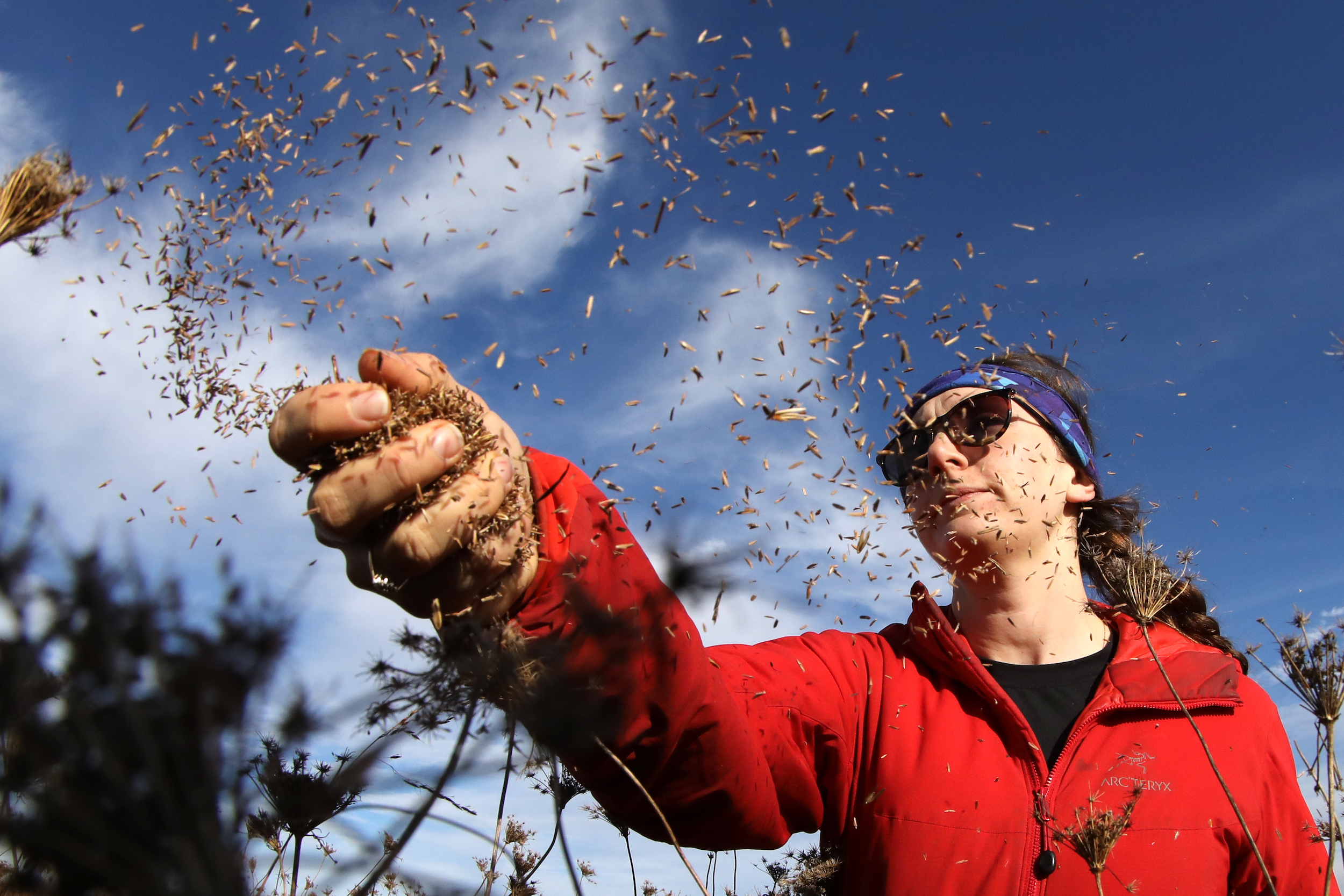
Resurrecting grasslands is good for the increasingly imperiled species who rely on them, like meadowlarks and the rare Karner blue butterfly. Bringing back native plants is even better: they’re naturally well-adapted to survive here without human help, and also provide the best food and shelter for native animal species who evolved to rely on them. Prairies and meadows also absorb carbon, storing most of it underground, and soak up floodwater. Plus, when frost melts and wildflowers start popping up in a giant bouquet of leaves and petals, the whole thing looks pretty spectacular.
“Right now everything’s brown and going dormant, but if you come here in July and August, that’s when the prairies are blooming and just humming with bees and butterflies,” said Shannon Stephens of the Nottawasaga Valley Conservation Authority, which is leading the effort.
“In the spring, you’ve got the grassland birds singing.”
The three-hectare property is in Shelburne, about an hour and a half’s drive from Toronto in an area of Ontario’s Greenbelt dotted with provincial parks, nature reserves, rolling hills and farms. A lot of the Greenbelt lies on rich agricultural land, but not this site: a tenant farmer tried to grow crops here for years, but found the soil too acidic, sandy and compacted. So, the landowner asked the conservation authority — an agency overseeing conservation and development in the lands surrounding the nearby Nottawasaga River — for help to do some kind of habitat restoration. Together, they settled on grassland and got to work in 2021.
Although the Shelburne project is young, it’s already changed the land. The soil is looser and able to absorb more water, nurturing more native grasses and flowering plants. But the site is still not as lush as Stephens hoped it would be by now — even weeds weren’t as big as she’d expected, held back by the acidic soil. “I was like, ‘Oh my god, even the weeds are having trouble here,’ ” she said with a chuckle.
So the conservation authority, with support from World Wildlife Fund Canada’s nature and climate grant program and a gaggle of volunteers, went back in November to plant some more.
For millennia before European colonization, Indigenous Peoples in what’s now known as North America managed grasslands to keep them healthy, harvesting food and medicines there. Often, communities used fire to renew the ecosystem and encourage new growth. Fire is a part of nature — so are people.
As settlers dispossessed Indigenous nations of the land and started farming and building, however, they often began by clearing meadows and savannas, which are less valued than forests and easier to plough. Many thought of grasslands as an intermediate type of landscape — something that springs up when a forest is cut down or farmland is abandoned, instead of a distinct landscape with its own ecological importance. Somewhere between 75 to 90 per cent of the grasslands that once existed in Canada are now gone, lost to agriculture and development.
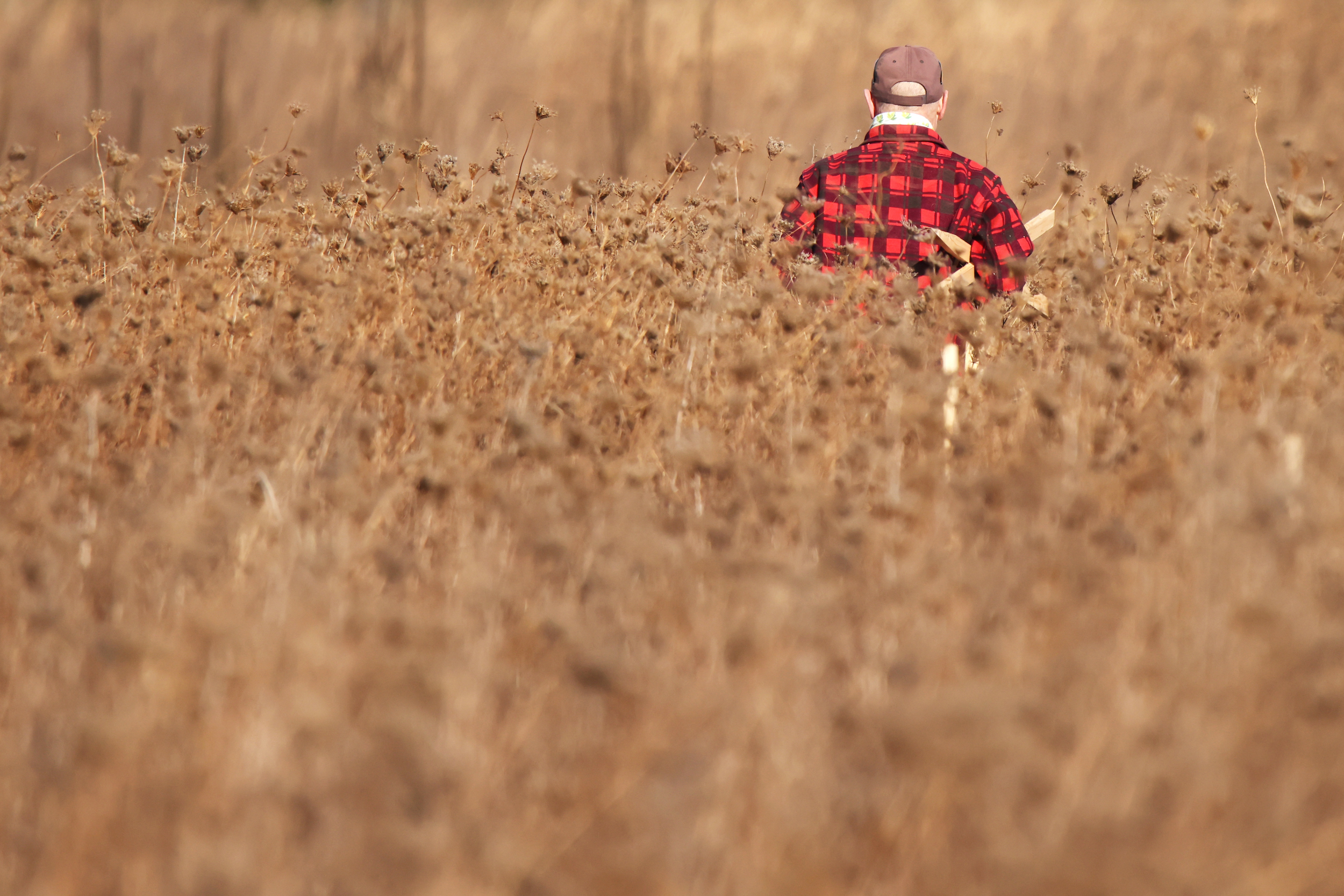
Even today, not everyone sees the point of grassland. Just last April, Ontario Premier Doug Ford famously described one piece of the Greenbelt as an “empty field with weeds in it,” arguing it should be used for housing instead. But in recent years, Western scientists have started to clue in to something Indigenous Knowledge held true all along: grasslands are vital and humans can be a force for good in keeping them healthy.
More and more, international consensus is pointing to restoring nature, not just conserving what’s left, as a vital way to sequester carbon and counteract climate change. And although planting trees tends to be the popular choice for habitat restoration, grasslands have advantages that shouldn’t be overlooked. Over the course of many years, they store an enormous amount of carbon in their roots, which extend metres underground. They’re hubs of biodiversity, too. Every hectare matters.
“It all adds up,” Ryan Godfrey, a botanist with World Wildlife Fund Canada who helped sow seeds at the Shelburne site in November, said. “It has to add up.”
The idea of grassland restoration can spread. Stephens has seen landowners become interested after watching a neighbour have their land planted, which is what happened with the Shelburne site. Beyond property lines, this field is connected to the land that surrounds it and the waters flowing through it. Wind and birds carry seeds in all directions. Various conservation organizations, First Nations and environmental groups across Ontario, Canada and even the continent are doing grassland restoration too.
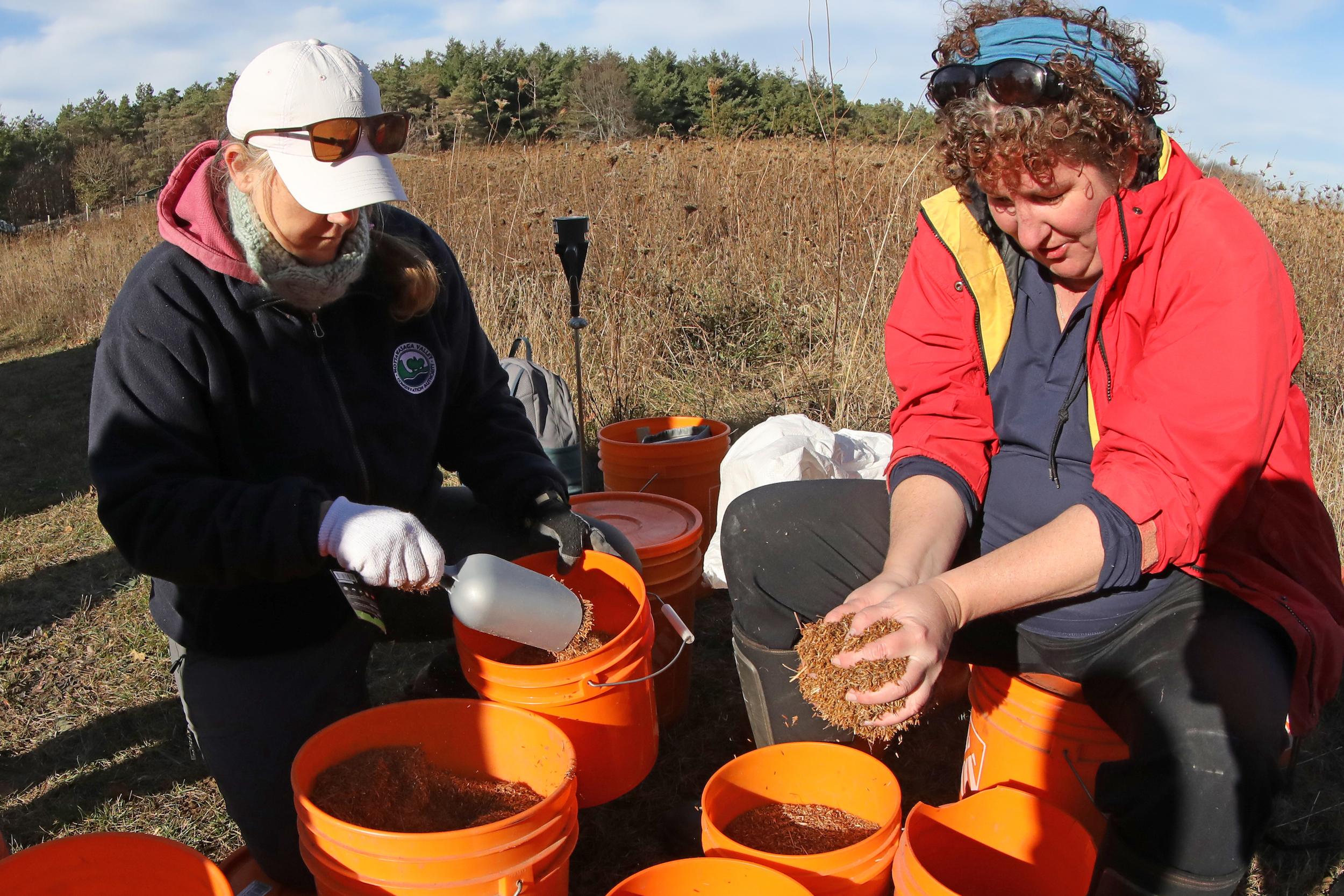
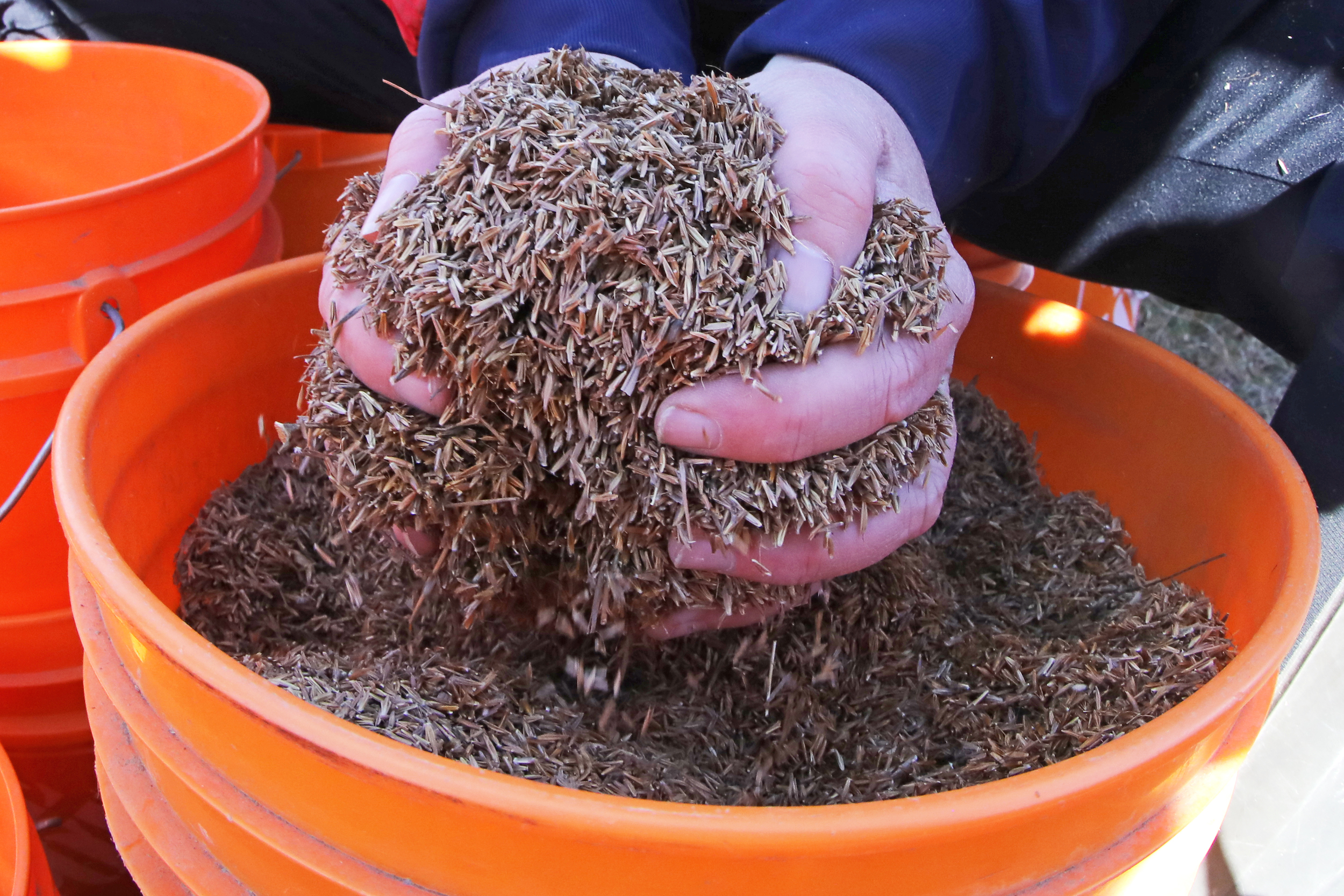
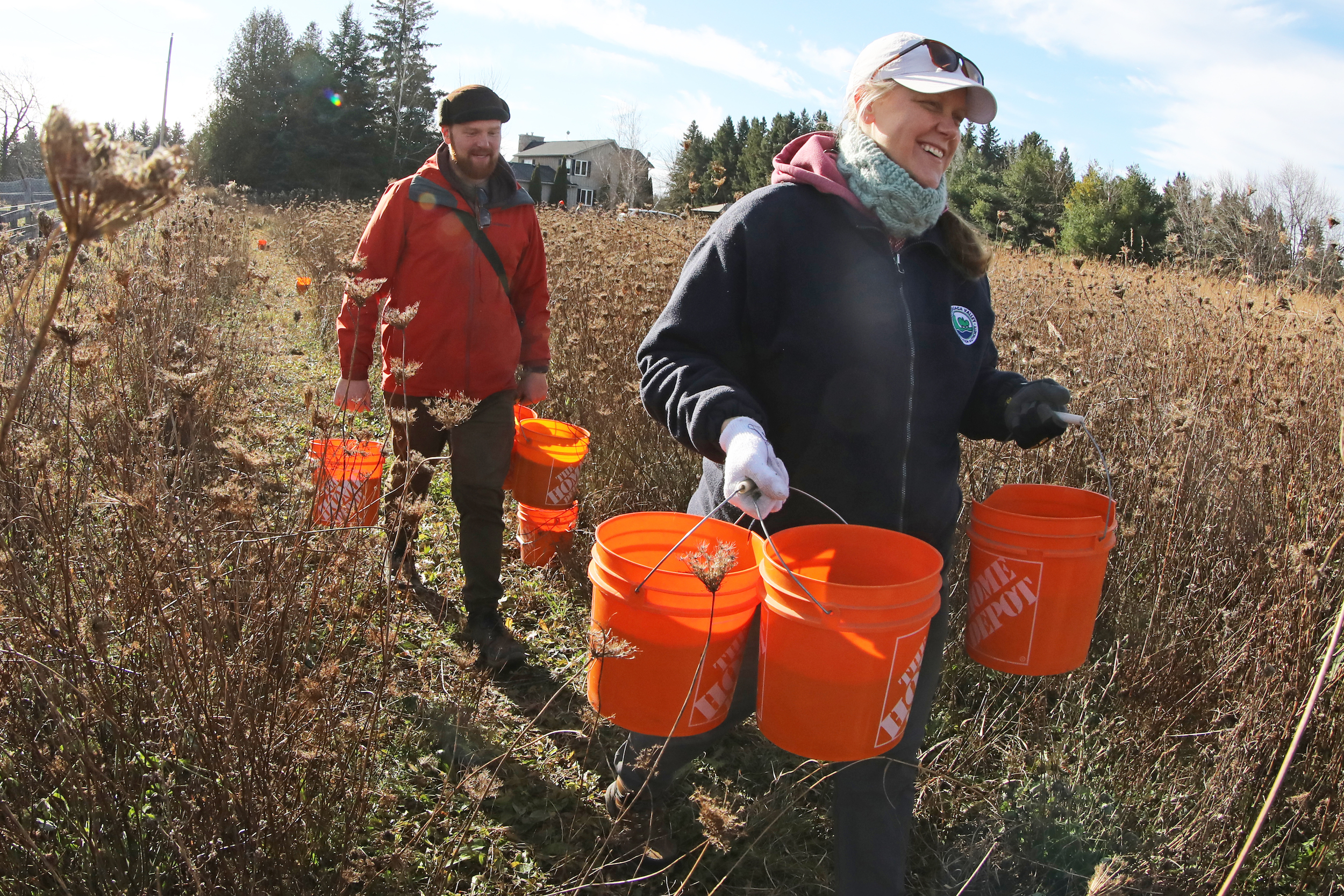
Maybe, with enough work and time, a patchwork of restored places can reconnect to form a healthier landscape. A day of sprinkling seeds can seem small, but the ripple effects can grow. “How big? A great question,” Godfrey said. “But definitely, definitely way bigger than this. It cascades out.”
At the centre, Godfrey said, is the need for many people to fundamentally change the way they see nature and their place in it. Generations of settlers have been taught that nature is something to be fenced off in parks because humans ruin natural places.
“Actually, what we needed to learn was how to touch things in a nicer way,” Godfrey said.
Last fall in Shelburne, the renaturalization team used a technique called overseeding, where people scatter grass and wildflower seeds by hand on top of existing plants, filling in gaps without disturbing what’s already in the ground.
Seeds for native plants are often miniscule and, especially for wildflowers, expensive. In the palm of your hand, some look like tiny grains of sand. To make it easier to spread them evenly and maximize their odds of survival, Stephens mixed them with heaps of smooth, oblong oat seeds, which will die off over winter and leave room for the native plants to grow. Row by row and handful by handful, the team emptied their buckets, the sun beaming down.
Many people think of spring as the time for sowing seeds, but Stephens said there’s also a window in late fall. Some native species, including plenty of wildflowers, don’t just sprout as soon as they’re planted: they need to go through a cold, moist period to germinate. Humans can replicate it artificially, but it’s easier to let winter do the work.
As the months go by, snow will press the seeds into the ground, getting them ready to sprout in spring. It takes a little while, but once they mature, flowers will start to bloom and the grasses could be nearly two metres tall.
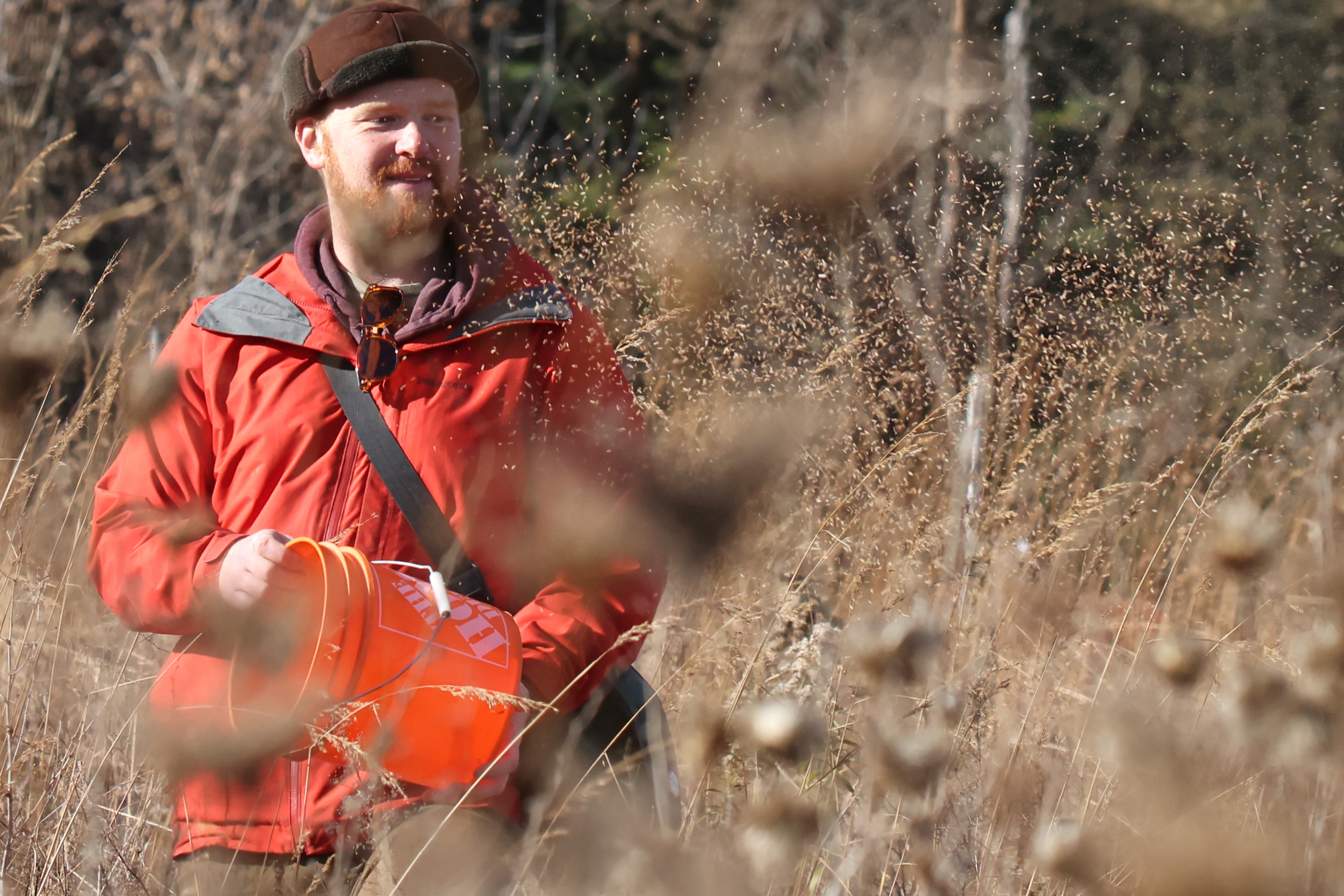
“The first couple of years, you don’t see much,” Stephens said. “It looks pretty weedy to be honest. But then the second year, you start to see some of the wildflowers bloom. Third year, you’re usually seeing grasses.” Eventually, the team hopes grassland birds — like meadowlarks and bobolinks, both threatened species in Ontario — will take up residence, along with butterflies and native bees.
Meanwhile, magic is happening below the surface. As more plants grow, they add more organic material to the soil, making it looser and better able to support life. Less compact soil also means the ground can absorb more water — a handy quality when rain pours down or snow starts melting — helping to control floodwater and making not just the site but the area around it more resilient to extreme weather events, which are increasing with climate change. Native grasses also have far deeper root systems than crops, making the ground more stable and less susceptible to erosion.
Just like the native grasslands that existed in the region hundreds of years ago, this one will still need care and stewardship in the future. It might need to be burned, mowed or have animals graze on it to replicate the natural processes that would prevent it from becoming overgrown. But if they can do it right, people can sustain the land and the land can help sustain them, too.
“In southern Ontario, there’s really not a lot of ecosystem that hasn’t had incredible human influence,” Stephens said.
“We’re so intertwined with each other.”
Get the inside scoop on The Narwhal’s environment and climate reporting by signing up for our free newsletter. On a warm September evening nearly 15...
Continue reading
115 billion litres, 70 years to fix, $5.5 billion in lawsuits

Climate change, geopolitics and business opportunities power a blue economy

10 billion litres of sewage are dumped into Winnipeg’s lakes and rivers each year. Some...
